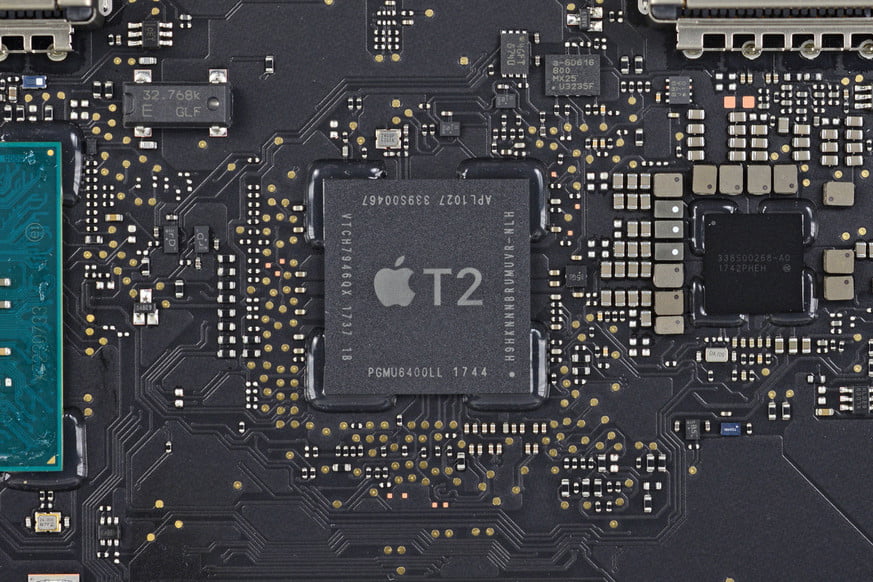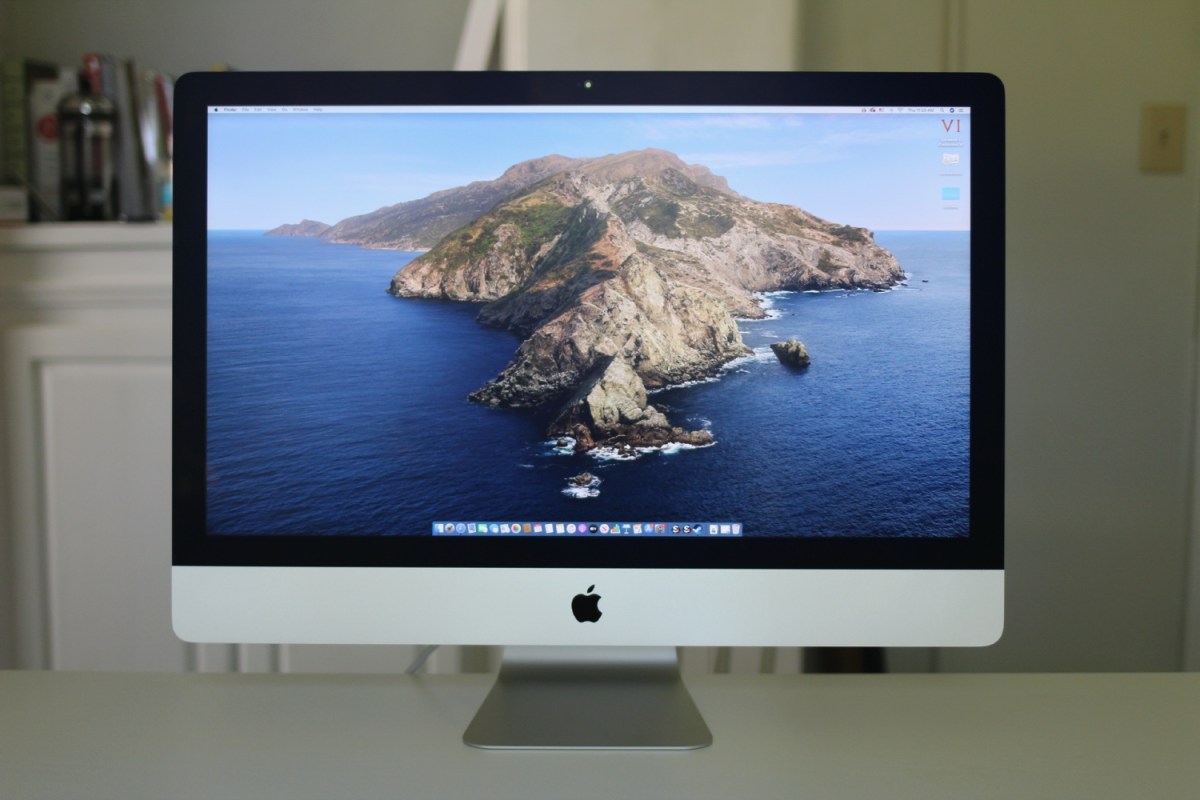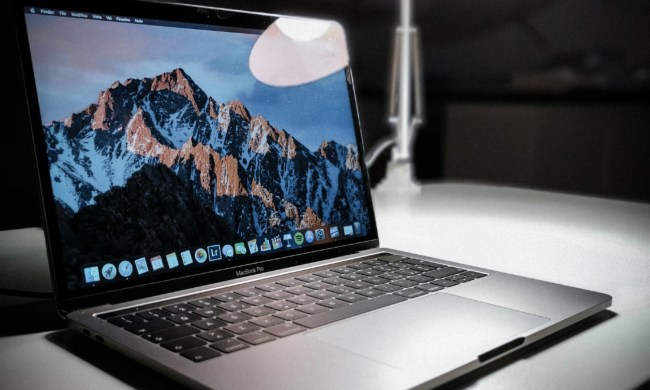The Intel era of Mac computers is coming to an end, and for good reason. In the past five years, MacBooks and iMacs have had a harder time standing out from the competition than Apple products normally do. After all, if Macs use all of the same components that other laptops do, what sets them apart? Apple has its own software in MacOS, yes, but from a hardware perspective, there are limitations.
That’s where the T2 chip came into play. From the Touch Bar on the MacBook Pro to improved webcams and speakers on the latest iMac, the T2 chip has been the magic behind the Mac for years. It was the Apple Silicon before Apple Silicon existed — and it just might give us a preview of the future of the Mac.
The humble beginnings of Apple Silicon

As the name suggests, the T2 Security Chip is not the first of its kind. Before it came the Apple T1 chip, which was introduced with the redesigned MacBook Pro in 2016. It wasn’t talked up much, but this was the first solely Apple-designed processor to appear in a Mac, long before the company announced its switch to its own ARM-based chips. While given the humble task of security, the T1 began to allow Apple to have more control over the way its computers functioned.
The T1 was responsible for the System Management Controller, which itself handled essential Mac functions such as power management, the fans, sleep and wake, and protecting the microphone and camera. The Touch Bar, also introduced in the 2016 MacBook Pro, came under the T1’s remit as well. Interestingly, one reason for this was so that the control strip would not count as an external display and impact Intel’s limit on how many screens could be connected at once.
the T2 chip has been giving the Mac the upper hand for years, specifically with features that Windows laptops can’t replicate.
Another reason the T1 controlled the Touch Bar was to help it protect Touch ID and Apple Pay by embedding your key data into its Secure Enclave. This basically acted as a fortified lockbox by preventing third-party apps from seeing your fingerprint data — the T1 checked your fingerprint against the one it stored in the Secure Enclave, then notified the app of the result.
In addition to the functions covered by the T1, the T2 also handles audio management, image signal processing for the FaceTime camera, and encryption and decryption of the SSD. It also guards the boot process against tampering.

The most recent iMac is a great example. Though it uses the same set of physical speakers as the previous generation, because the T2 has been introduced, they now sound far better. The T2 allows Apple to tune the speakers itself, using its own in-house algorithms and engineering.
Testing by AppleInsider has even showed that the T2 chip improves the performance of video encoding, although Apple has not publicly acknowledged this. Offloading these processes to the T2 chip not only makes them more secure, but also reduces strain on the processor, thereby freeing up its resources.
As you’ll notice, the T2 chip has been giving the Mac the upper hand for years, specifically with features that Windows laptops can’t replicate. Once control over the Mac has been fully handed back to Apple, we can expect more innovation and an even tighter grip on what these computers can do.
The future of the T2 in Apple Silicon Macs

Apple’s decision to take its processor development in-house has several consequences for the future of the T2 Security Chip. Apple hasn’t commented on the matter, but it is almost certain that the T2 chip as a separate entity will disappear. But fear not — the functionality of the T2 is not going away, its responsibilities will simply be absorbed into the Apple Silicon processors that will soon run Apple’s Macs.
With Apple getting more control over the main processors that will run its computers, the company will have more scope to build in the features it chooses. When Apple relied on Intel for its chips, it had to accept what Intel gave it. Apple got custom processors from Intel, but the modifications were minimal.
At its Worldwide Developers Conference (WWDC) in June 2020, Apple showed a slide depicting some of the capabilities of its upcoming Apple Silicon processors. Among the listed features were “Secure Enclave,” “high-efficiency audio processor,” and “high-quality camera processor” — all functions currently performed by the T2 Security Chip. With these roles being assumed by Apple’s new processor, there is no longer a need for a separate piece of hardware to perform them.
Apple-made processors in the iPhone and iPad can already handle Face ID, so why not on the Mac?
Oh, and one more thing: Moving the T2’s tasks to Apple Silicon could make highly desired features like Face ID on the Mac a dead certainty. We already know Apple is thinking about building facial recognition into its future Macs based on official patents and leaked MacOS code, but with the security considerations handled in a more streamlined manner by the Apple Silicon processor, any potential security hurdles to implementing the feature could potentially be overcome. After all, the Apple-made processors in the iPhone and iPad can already handle Face ID, so why not on the Mac?
Meanwhile, features that could use some significant improvement (cough, cough, the Touch Bar) might finally evolve into something more useful under the free reign of Apple Silicon. The possibilities for new features will be as wide open as they’ve been on the iPhone or the iPad.
What about repairs?

Apple devices have never been easy to repair. Repairability has just never been at the top of Apple’s priority list, and the T2 chip has always presented an additional obstacle to device repairs.
As it is, the T2 chip must “approve” any new or replacement hardware that is installed in a Mac. This is intended to prevent nefarious actors from replacing the Touch ID reader with one that steals your fingerprint data, for example — but it also means that any repairs have traditionally needed to be done through official means, either by Apple itself or by one of its Authorized Service Providers. You cannot just head to an independent repair shop down the road and get your SSD upgraded unless that shop can run Apple’s official diagnostic tools.
The good news is that Apple has recently expanded its Mac repair tools and training program to independent shops. You should check whether your local repair store has access to these tools before asking it to fix a T2-enabled Mac to avoid any possib;e hiccups.
Still, what is certain is that the T2’s focus on security — and the problems that presents for repairing your Mac — is not going to change with the introduction of Apple Silicon chips. The security functions of the T2 are not going anywhere, so neither will the checks when you get a component replaced or repaired. With Apple’s tightening grip of the Mac, you can expect to have less access to the internals of your computer, which is the necessary downside of more Apple control. Whether its exciting new features or a lockdown on repairs, it started with the T2 chip.



